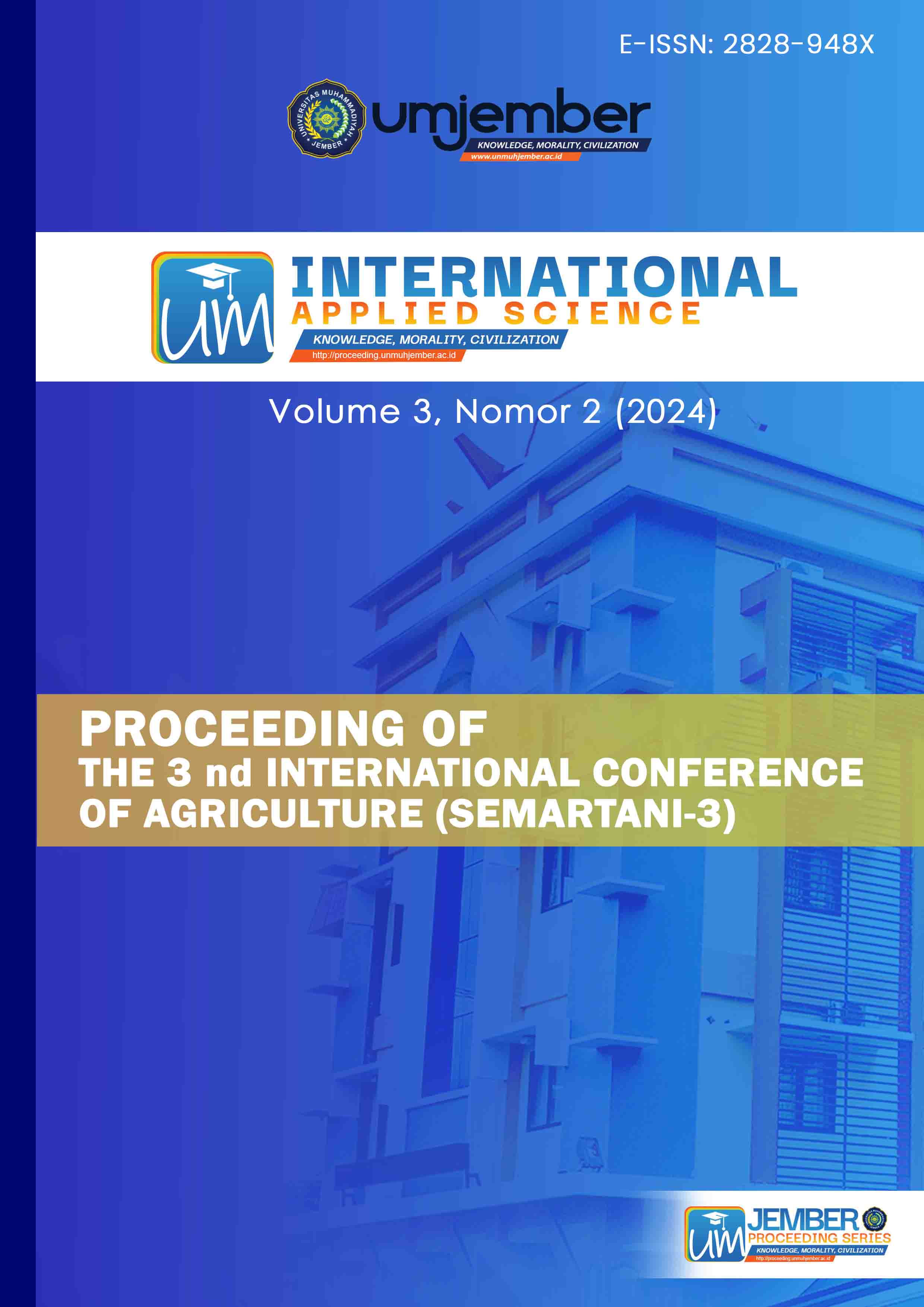Effect Of Tuna Flour Addition On Physical, Chemical, And Organoleptic Properties Of Crackers Physical, Chemical, And Organoleptic Properties Of Crackers
DOI:
https://doi.org/10.32528/ias.v3i2.641Keywords:
tuna, tuna flour, crackersAbstract
Crackers available in the market only provide a small portion of daily protein needs. Tuna (Euthynnus affinis) belongs to the Scombridae class and is an important commodity in Indonesia. The high nutritional value of tuna fish includes a considerable amount of protein, ranging from 22.6-26.2 g/100 grams of meat. Of the various ingredients that can be added to increase the protein content of crackers, one option is to use tuna flour due to its high protein content. This study aims to identify the optimal ratio and drying period for certain chemical properties as well as considering color, aroma and taste preferences by panelists as well as the shelf life of popular tuna crackers. The parameters used in this study include moisture content, ash content, fat content, protein content which measures the nutritional value; pH which indicates the level of acidity; swelling strength as an indication of textural quality along with organoleptic tests (taste, color, aroma and overall preference) which enables sensory evaluation analysis. The results showed that crackers with the addition of tuna flour have met the quality requirements of SNI 2973-2018. The tuna flour crackers formulation has a moisture content of 0.4%, ash content of 0.2%, protein content of 7.11%, fat content of 16%, pH of 6.48-6.50 and expandability of 0.6%.
Downloads
References
Yenima, M., Made S, I Made S, Agus S. (2020). Pengaruh Lama Perendaman Dalam Air Perasan Buah Belimbing Wuluh (Averrhoa bilimbi Linn) dan Lama Penyimpanan Terhadap Karakteristik Ikan Tongkol (Euthybbus affinis) Pada Suhu Ruang. Jurnal Ilmu dan Teknologi Pangan, 9, 71.
Cilia, M. W. H & Kurnia, A. (2016). Pengaruh Penggunaan Tepung Ikan Layang (Decapterus russelli) dengan Tepung Ikan Tongkol (Euthynnus affinis) dalam Pakan terhadap Pertumbuhan dan Tingkat Kelangsungan Hidup Juvenil Udang Vaname (Litopenaeus vannamei). Media Aku-atika, 1(4): 177–186.
Deslianti, B., Kurnia, A., & Muskita, W. H. (2016). Studi Penggunaan Tepung Ikan Layang (Decapterus Russelli) Dengan Tepung Ikan Tongkol (Euthynnus Affinis) Dalam Pakan Terhadap Kecernaan Juvenil Udang Vaname (Litopenaeus Vannamei). Media Akuatika, 1(4)(2503–4324), 261–269.
Ernisti, W., Riyadi, S., Fitra, D., & Jaya, M. (2018). Karakteristik Biskuit (Crackers) Yang Difor-tifikasi Dengan Konsentrasi Penambahan Tepung Ikan Patin Siam (Pangasius Hypophthalmus) Berbeda Characteristics Of Crackers (Biskuit) Which Fortified With Catfish (Pangasius Hy-pophthalmus) Fish Flour At Different Concentration. In Jurnal Ilmu-Ilmu Perikanan Dan Budi-daya Perairan (Vol. 13, Issue 2).
Downloads
Published
How to Cite
Issue
Section
License

This work is licensed under a Creative Commons Attribution-NonCommercial 4.0 International License.


